
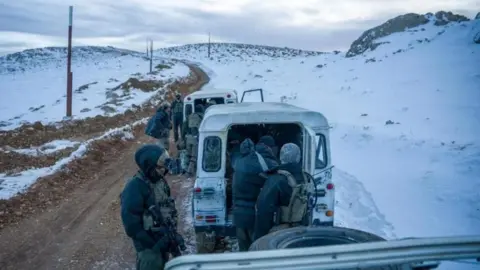 Reuters
ReutersAfter launching hundreds of air strikes on Syrian military assets and seizing sites including a mountaintop with an uninterrupted line of sight to the capital, Damascus, Israel appears to be seizing what it sees as a unique moment of opportunity.
Syria's command structures were in disarray, with key positions apparently left unmanned after the fall of the Assad regime.
The Israeli military says its air and naval forces have carried out more than 350 raids since Saturday night, destroying an estimated 70-80% of Syrian strategic military assets from Damascus to Latakia.
The Israeli army said that these weapons included fighter aircraft, radar and air defense sites, and naval ships, in addition to weapons stocks.
Israeli Defense Minister Israel Katz said: “The navy worked last night to destroy the Syrian fleet with great success.”
The Israeli military has also moved ground forces eastward from the Israeli-occupied Golan Heights to a demilitarized buffer zone in Syria, and now admits it is a little further.
Katz said he asked the army “to establish a sterile defensive zone free of weapons and terrorist threats in southern Syria, without a permanent Israeli presence.”
One Israeli commentator said the past 72 hours “have been special even for people who thought they had already seen it all.”
Yoav Limor wrote in the Israel Hayom newspaper: “It not only stripped the Syrian army of specific capabilities, but rather returned it to the starting line, stripped of any important strategic capabilities.”
Udi Etzion said on the Walla news website, “The Israeli army’s operation to destroy Syrian military capabilities is the largest ever.”
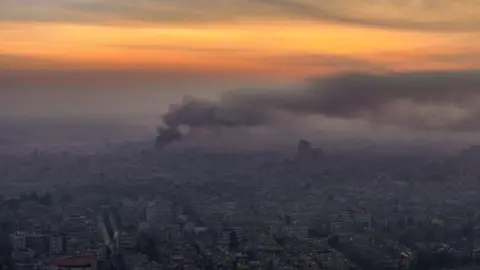 Getty Images
Getty ImagesFormer Israeli Air Force officers commented in online posts that some of the attacks carried out as part of this operation were based on plans drawn up years before.
One military analyst said that Israel had already identified some targets in the mid-1970s.
Meanwhile, the forces took control of sites in the Golan, including the summit of Mount Hermon, according to Israeli media. The mountain is known in Arabic as Jabal al-Sheikh.
The Ynet news website quoted Kobi Michael, a researcher at the Israeli Institute for National Security Studies (INSS), as saying: “The region guarantees strategic control over the entire southern Syrian arena, which generates a direct threat to Israel.” “There is no observation point higher than the Syrian part of the Golan.”
Officials stress that Israel was acting in its national security interests after the collapse of the Assad regime.
The goal, they say, was to stop weapons the regime was keeping in the wrong hands — whether Syrian extremist factions or its old foe, the Lebanese militant group Hezbollah. Hezbollah and its ally Iran were close allies of Assad, and helped support him in office during the long civil war in Syria.
“We will not allow an extremist Islamic terrorist entity to operate against Israel outside its borders, endangering its citizens,” Prime Minister Benjamin Netanyahu said in a video message on Tuesday.
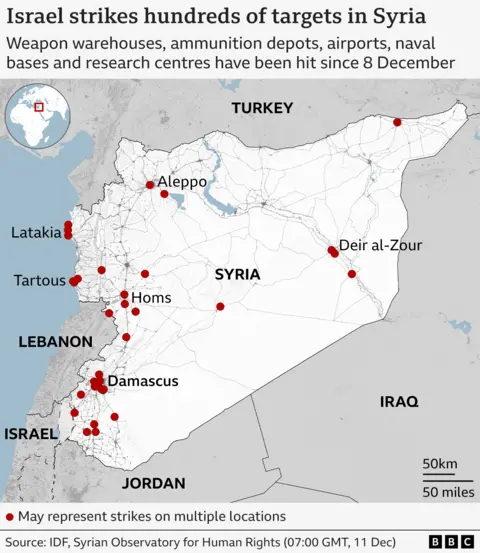
Syria and Israel fought each other in the Middle East wars in 1948, 1967 and 1973, and officially consider each other enemy states.
During the era of Bashar al-Assad, Syria was an important regional military power. Israel has attacked it in recent years with hundreds of strikes that are rarely acknowledged publicly. Israel's calculations included room for deniability for itself, but also for Assad, so that he would not feel forced to respond.
These focused on preventing the transfer of weapons to Hezbollah, as the main transportation route was overland from Syria to Lebanon, weapons manufacturing, and Syrian air defense systems, which posed a threat to Israeli warplanes sent on missions.
Israel has avoided launching major attacks that could have led to a wider war and has sought to avoid conflict with Russia after becoming Assad's biggest backer in recent years.
Some defense analysts suggest that Israel wanted to avoid weakening the Syrian regime for fear of provoking the chaos that could follow if its opponents seized power. Over the years, Israel and Syria – under their secular Baathist regime – have adhered to clearly defined red lines; He was a well-known opponent.
But the rapid advance of the Islamist group Hay'at Tahrir al-Sham prompted a new Israeli strategy to be hastily drawn up.
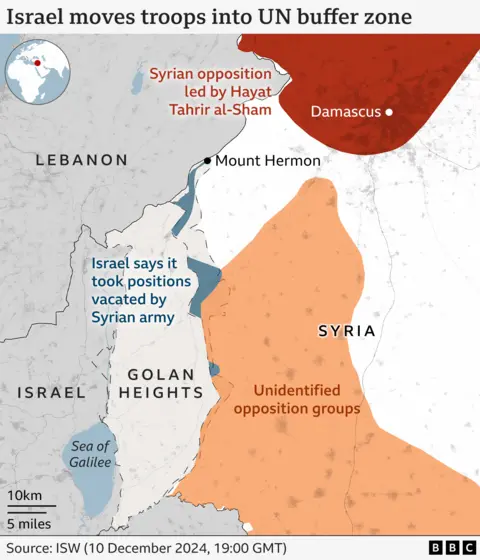
UN peacekeepers remain in the buffer zone established on Syrian territory following the 1973 Middle East war, and have stressed that Israel, by moving its ground forces there, is now violating the ceasefire agreement that established it.
Israeli officials say that the ceasefire agreement has now collapsed, as the other party to the agreement no longer exists, and that its movements are temporary and limited in self-defense.
A spokesman for the UN peacekeeping forces said that the peacekeepers “were unable to move freely within the buffer zone following recent events,” adding that “it is necessary to allow the UN peacekeepers to carry out the tasks assigned to them without hindrance.”
UN spokesman Stephane Dujarric said: “We are against this type of attack. I think this is a turning point for Syria. It should not be used by its neighbors to encroach on Syrian territory.”
Qatar, Saudi Arabia, Kuwait, Jordan, Iraq and the Arab League have all issued official statements, with many describing it as a land grab taking advantage of recent events, and a violation of Syria's sovereignty and international law.
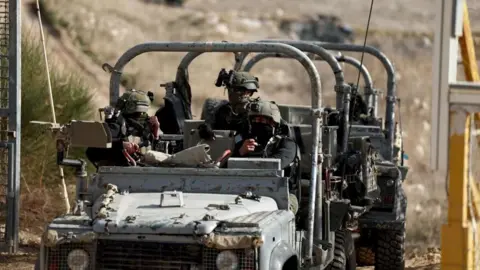 Environmental Protection Agency
Environmental Protection AgencyFrance and Germany also criticized Israeli actions, as France demanded that Israel withdraw its forces from the buffer zone, and Germany warned Israel and Turkey, which are stationed in northern Syria, against endangering the chances of a peaceful transition in Syria.
Foreign Minister Annalena Baerbock said: “We must not allow the internal Syrian dialogue process to be undermined from the outside.”
The United States urged Israel to ensure that its incursion is “temporary.”
However, there was broad popular support among Israelis for the preventive measures taken by the country.
Many media outlets emphasize the potential danger posed by new Islamist leaders in Syria, where Hay'at Tahrir al-Sham remains widely classified as a terrorist organization.
In Yedioth Ahronoth newspaper, Amichai Attali congratulated the Israeli military and political institutions, saying that they had learned a valuable lesson from the deadly Hamas attacks on October 7, 2023, which caught the country by surprise.
“One of the most important lessons of invasions, massacres and mass kidnappings is that we cannot afford the privilege of trying to explain the enemy's intentions,” he wrote.
“We cannot afford to make mistakes on this front. We have no margin for error on this.”









